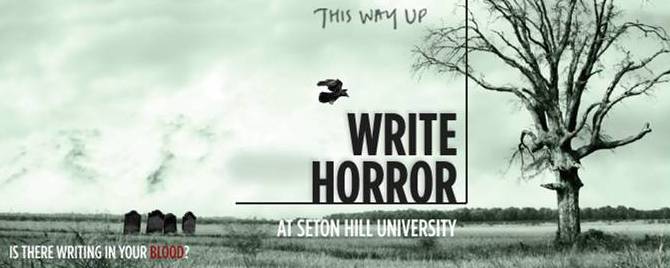Any questions?
Lots of presenters conclude with that phrase. I’m different. I like to start with it.
The strategy may not be as harebrained as it sounds. I’ll explain.
 I’ve just returned from my biannual residency in Writing Popular Fiction at Seton Hill University, where I always open my presentations by passing out index cards and asking the MFA candidates to record questions that come to mind during the lecture. Naturally, they can raise their hands as we go, but the question cards ensure that important inquiries don’t get passed over in the race toward the bell.
I’ve just returned from my biannual residency in Writing Popular Fiction at Seton Hill University, where I always open my presentations by passing out index cards and asking the MFA candidates to record questions that come to mind during the lecture. Naturally, they can raise their hands as we go, but the question cards ensure that important inquiries don’t get passed over in the race toward the bell.
During the final hour of each three-hour presentation, I collect the cards, shuffle them, and spend fifteen minutes discussing them with the students. It’s a collaborative process. I don’t profess to have all the answers.
At last week’s residency, my presentation on “The Art of Revision” generated some terrific inquiries ranging from the nuts and bolts of manuscript style to deeply theoretical thoughts on the writing process. And as is always the case, a few questions were left unasked and unanswered.
So what do you say we revisit those questions here? I’ve got all the cards, reshuffled and face down. We’ll try one card for starters, do a few more later in the week. Sound good?
So here’s the first one:
How do you show a scene break in your manuscript? Do you use an asterisk, hashtag, or simply a blank line?
This one generated some good discussion, with some of the students preferring a set of asterisks while others suggested that a single hashtag was best.
Indeed, the SFWA website still recommends the hashtag. Vonda N. McIntyre’s wonderfully detailed document on the subject is available there for free download. Go check it out if you haven’t seen it. It’s been the genre standard for many years.
 Personally, I prefer the hashtag, but I was intrigued to hear from Christopher Shearer that at least one professional editor recommends avoiding them in favor of simply leaving the space blank.
Personally, I prefer the hashtag, but I was intrigued to hear from Christopher Shearer that at least one professional editor recommends avoiding them in favor of simply leaving the space blank.
I recall an amusing story that Harlan Ellison told about his manuscript for “I Have No Mouth and I Must Scream,” about how he cut some graphics from a computer magazine and pasted them onto his manuscript to indicate line breaks.
I sometimes do stuff like that too: a serpentine line for my novel Vipers and a staring eye for my collection Visions. My editor didn’t complain, and the manuscripts were accepted. Nevertheless, if I were a young writer casting my first manuscripts to the wind, I’d opt for the hashtag.
What do you think? Please submit your questions, comments, suggestions. As I’ve said before, the best part of this blog is often in the talkback.
I’m out of space and out of time. We’ll do more questions later. For now, I yield to the power of the hashtag.
#


Leave a Reply